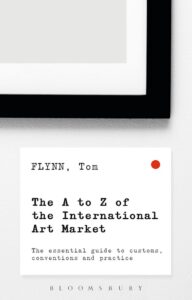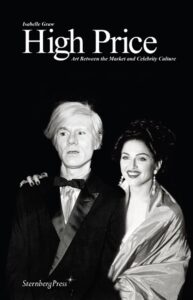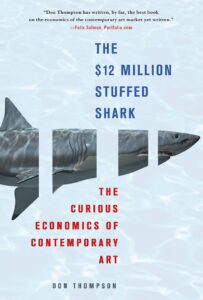
Accumulating artwork is more than a hobby. It is a exercise that can have economic, social, historic and even political implications. How to recognize the significance of collecting 1 or another piece? What does it imply to acquire art skillfully? What factors need to I consider into account?
The next checklist of textbooks addresses, from a essential and reflective place of see, the unique elements that a single need to know when becoming a specialist collector.
1. The A-Z of The Global Artwork Current market by Tom Flynn
It is approximated that there are over 300,000 corporations included in the world’s artwork market, using all around 2.8 million folks. But the artwork globe carries a veneer of thriller and secrecy that many folks uncover daunting, and the language made use of by sector insiders can be alienating and complicated to those people new to the artwork market place.
The A-Z of the Worldwide Art Sector not only clarifies handy terms and definitions, but also signifies a substantial contribution to the fast-creating procedures of transparency and democratisation in the global art small business. Comprising art market place terms and core concepts – both equally historic and up to date – this guide is a prolonged-awaited reference resource that presents a unique introduction to a dynamic company sector. Hence, the e book offers an available and thorough perception into significant places of industry follow and tailor made that everyone associated in the art industry will locate useful and enlightening.

2. Higher Price: Artwork Involving The Market place and Celebrity Tradition by Isabelle Graw
These days, the artwork entire world is not dominated by a small group of insiders. In accordance to Graw, the art financial state has been reworked from a retail company into an market that makes visuality and which means. This e-book thoughts the assumption of a dichotomy amongst art and the marketplace, as perfectly as the notion that sector value is equal to inventive price. Although inspecting the intrinsic link amongst inventive generation and its market conditions, Graw also insists that artwork is a commodity unlike any other. Higher Price statements that artwork and the marketplace have to escape each other precisely mainly because they are so deeply entangled.
This e book presents many examples to support the initial claim of a enormous advancement in the defining function of the market place and its players in the course of the artwork boom, who also significantly have a say in setting up artistic worth. There is in truth much to counsel that in the latest many years, whether or not an artwork was deemed suitable in artistic conditions depended to a greater extent on its current market value. But this marketplace benefit nevertheless is dependent on a “symbolic value” for its greatest legitimacy. Devoid of symbolic price, no industry value—this is the book’s second declare. For if it is legitimate that society has been transforming since the 1970s from industrial capitalism into what Antonio Negri has termed “cognitive capitalism,” then below this sort of problems, enhanced value would once a lot more be accorded to the symbolic that means of an artwork. The artwork earth is by definition a know-how culture, even if the spell of business results has extensive held sway above it.

3. I Offered Andy Warhol (To Shortly) by Richard Polsky
In early 2005, Richard Polsky determined to place his much-liked, tough-won Warhol Fright Wig, up for auction at Christie’s. The market place for present-day artwork was sturdy and he was hoping to switch a financial gain. His instinct appeared to be on focus on: his image offered for $375,000. But if only Polsky had waited . . . Around the subsequent two a long time, charges soared to unimaginable heights with multimillion-dollar bargains that turned the norm and not the exception. Buyers and sellers have been baffled, art sellers were being bypassed for auction houses, and benchmark prices proved that trees actually do grow to the sky. Had the sector lost all purpose?
In I Offered Andy Warhol (Too Before long), Polsky potential customers the way as a result of this explosive, small-lived time period when the “art world” grew to become the “art industry.” He delves into the powering-the-scenes politics of auctions, the change in electricity absent from galleries, and the look for for inexpensive artwork in a wealthy man’s actively playing discipline. In contrast to most in the art entire world, Polsky is not worried to convey to it like it is as he negotiates offers for customers in New York, London, and San Francisco and seeks out a alternative for his missing Fright Wig in a current market that has galloped beyond his means. A persuasive backdoor explain to-all about the odd and fickle earth of art accumulating, I Marketed Andy Warhol (Much too Shortly) usually takes an unvarnished glance at how the sector shifted from artwork appreciation to monetary appreciation.

4. The $12 Million Stuffed Shark: The Curious Economics of Present-day Artwork by Don Thompson
Why would a intelligent New York investment decision banker pay out $12 million for the decaying, stuffed carcass of a shark? By what alchemy does Jackson Pollock’s drip portray No. 5, 1948 offer for $140 million?
Intriguing and entertaining, The $12 Million Stuffed Shark is a Freakonomics strategy to the economics and psychology of the up to date art planet. Why were history price ranges achieved at auction for operates by 131 up to date artists in 2006 by yourself, with astonishing new heights achieved in 2007? Don Thompson explores the dollars, lust, and self-aggrandizement of the artwork environment in an try to establish what tends to make a specific work beneficial whilst other folks are overlooked.
This guide is the first to search at the economics and the advertising methods that enable the modern art industry to generate such astronomical rates. Drawing on interviews with earlier and current executives of auction residences and art dealerships, artists, and the consumers who transfer the market place, Thompson launches the reader on a journey of discovery as a result of the peculiar entire world of modern day art. Surprising, passionate, gossipy, revelatory, The $12 Million Stuffed Shark reveals a great deal that even experienced auction purchasers do not know.

5. The Change. Artwork and The Increase of Ability of Modern day Collectors by Marta Gnyp
The Shift will take the reader on a journey as a result of the planet of contemporary artwork. Whilst analysing the motives and conduct of internationally functioning collectors, it clarifies the existing attractiveness of present-day artwork and discloses the unwritten guidelines, active networks, and persistent myths of the swiftly expanding territory of artwork amassing. Collectors engage with artists, galleries, museums, and auction houses in many ingenious strategies while pursuing their passions and targets. The e-book examines the attraction of accumulating at big, its multifaceted social life, and the money options it would seem to provide.



